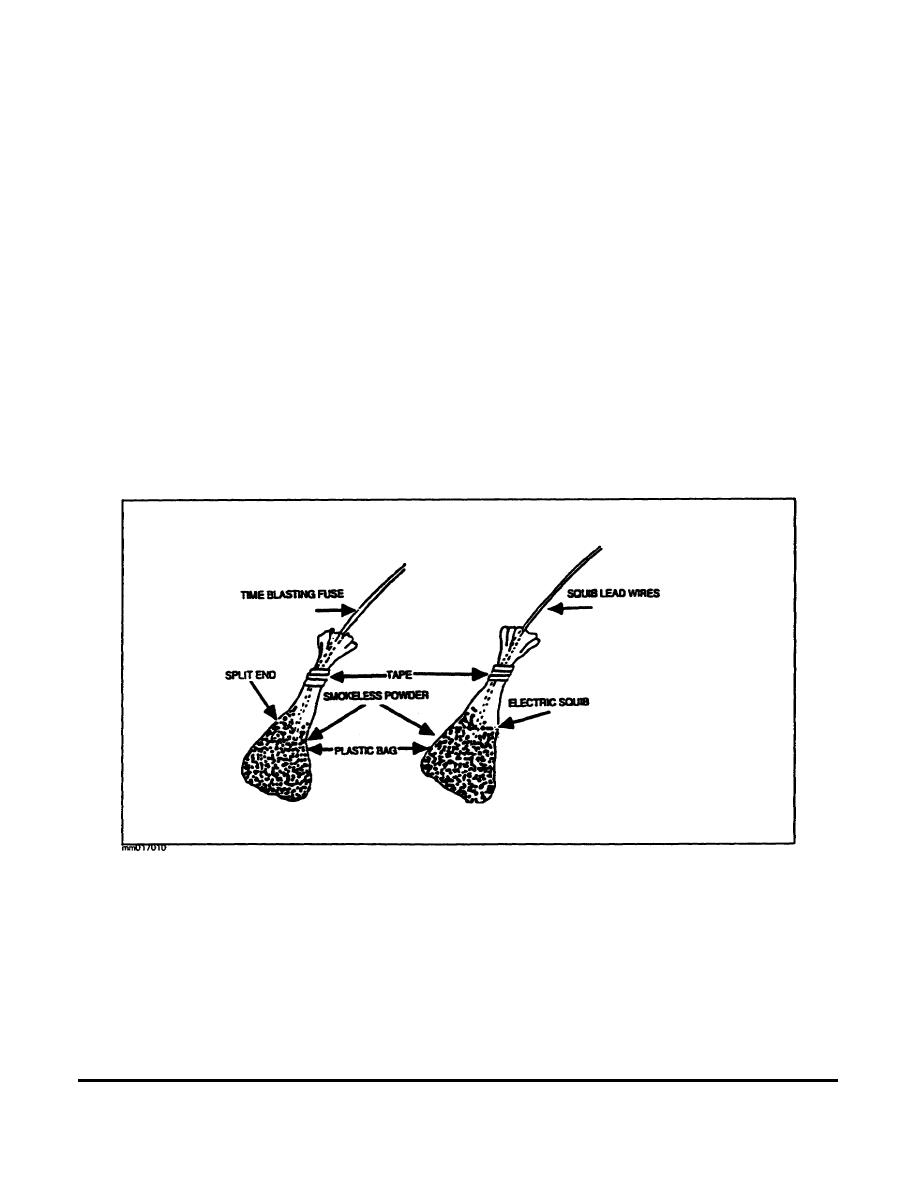
Before surface-burning munitions, survey the area to ensure that the ground is perfectly smooth, free of loose
material, without cracks or crevices, and packed sufficiently to prevent explosive materials from infiltrating
during burning operations. The depth that hazardous materials can be stacked or positioned must also be
considered on an individual basis in order to prevent an unwanted detonation. Bulk explosives, propellants, and
pyrotechnic materials are usually spread in a thin layer over a combustible bed in order to create a good burning
environment. Surface-burning operations may not be repeated at the same burning site within a 24-hour period.
Surface burning procedures are as follows:
Stack items or containers in a pile on the surface.
Pour diesel or fuel oil over entire pile, if applicable. Do not use volatile flammable liquid to facilitate
burning. Volatile flammable liquid has vapor that can be ignited at or below 100 F. This includes ether,
acetone, gasoline, ethyl alcohol, methyl alcohol, benzene, toluene, xylene, acyl acetate, napalm, and JP-4.
Diesel or fuel oil may be added either as layers are constructed or after all munitions have been laid.
Prepare an ignition train according to TM 9-1300-277, as shown in Figure 1-10, Figure 1-11, and Figure 1-12.
Ignite the materials according to TM 9-1300-277.
At least 12 hours after the fire has burned out, inspect the area for unburned or partially burned munitions. This
inspection must be performed by a qualified person, with a second qualified person acting as a safety backup.
Figure 1-10. Plastic bag of smokeless powder used in burning operations.
Burning In Pits or Trenches. Use this method if the possibility of propulsion exists, or to limit
fragmentation if detonation should occur. Pits or trenches must not be reused within a 24-hour period, unless the
area is thoroughly soaked with water and an inspection by qualified personnel to ensure the safety of continued
MM0170
1-16



 Previous Page
Previous Page
